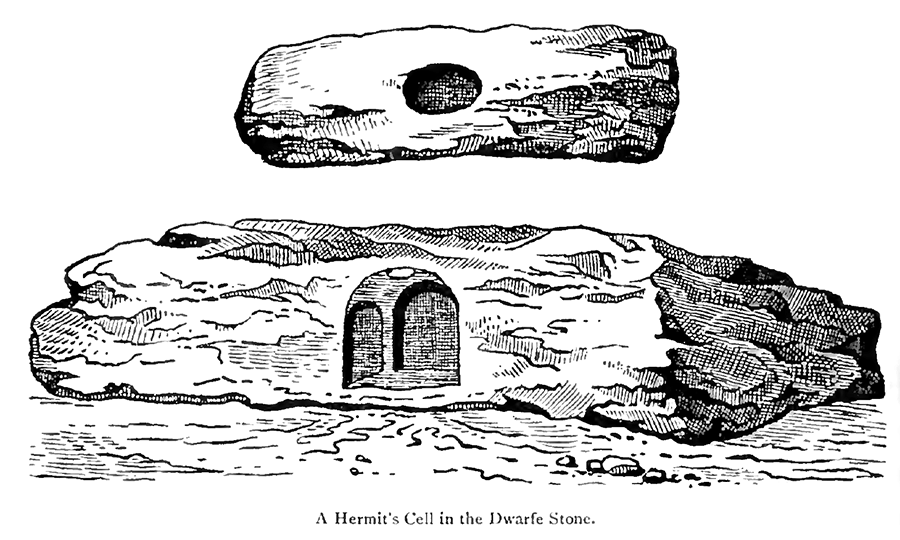
Ane Account of the Ancient and Present State of Orkney, ms, p.20, 1684.

This illustration on the
left is from Wallace's handwritten manuscript, this was later published by his
son as a book after his death. The illustration on the
right is from
the book and differs from the original, the image is flipped horizontally, the
angles are squared up and the block is covered with small peck marks.
Both illustrations are crude by the standards set by other illustrators such as the
legendary Fred Coles, but they are important as they show the "robber hole"
cut into the roof, so giving us a reliable terminus ante quem for this.
Jo Ben's account in Latin dated 1529 also mentions the hole, but the dating of this
piece
is open to doubt.
Tours in Scotland 1747, 1750, 1760, p.136, Edinburgh University Press 1887.

Pococke's rather fanciful
rendition of Dwarfie Stane, is definitely not to scale, notice the disparity in
relative size of the robber hole in the two views.
The colonnaded interior is a fiction and the closing plug is nowhere to seen. He
saw the robber hole as an intentionally cut chimney " This seems
to have been the hearth,
&
the hole to be made to carry off the smoak".
He thought the stone a hermitage, "without doubt the habitation of a Hermit".
Proceedings of the Society of Antiquaries of Scotland, 70, p.218, 1936.

Calder's diagrams are first
rate and detailed, the extent of the robber hole is shown and also the domed
end of the
closing plug, caused by chiselling during attempted entry when it was still in
place.
As usual, our sincere
thanks to the Society for allowing use of material from its most excellent
Proceedings.